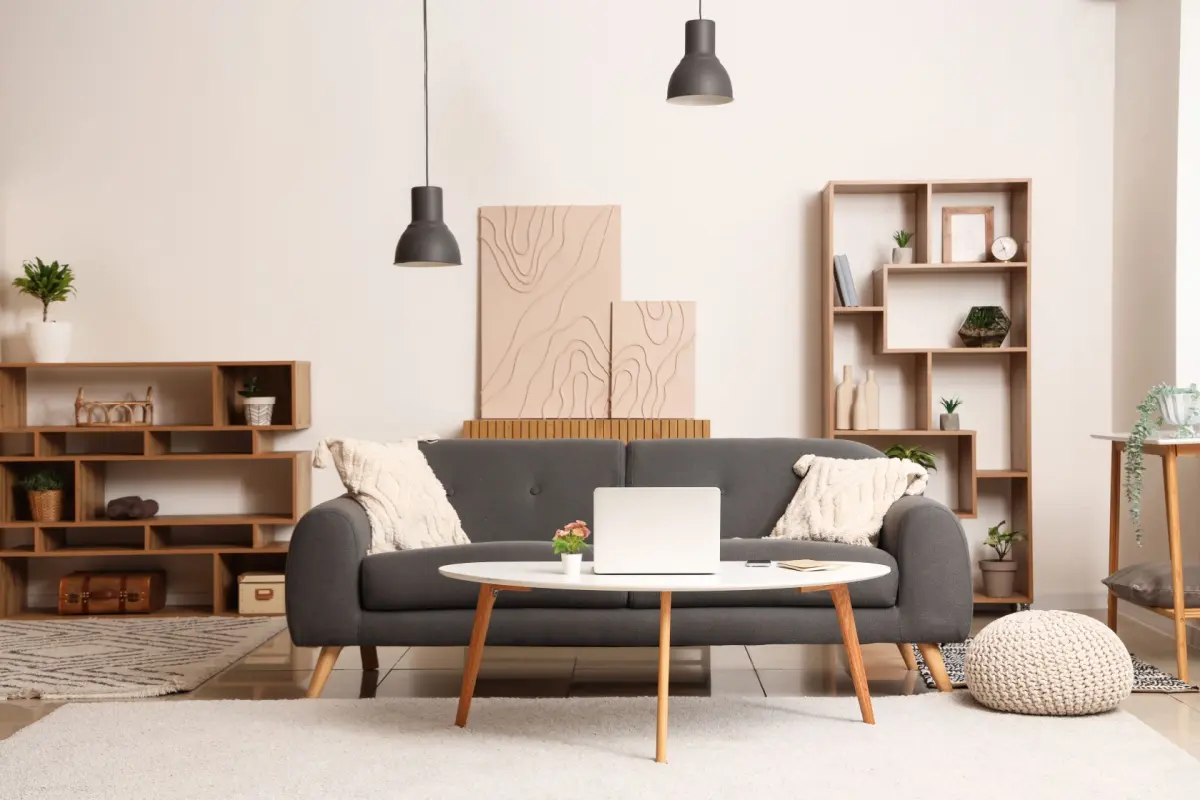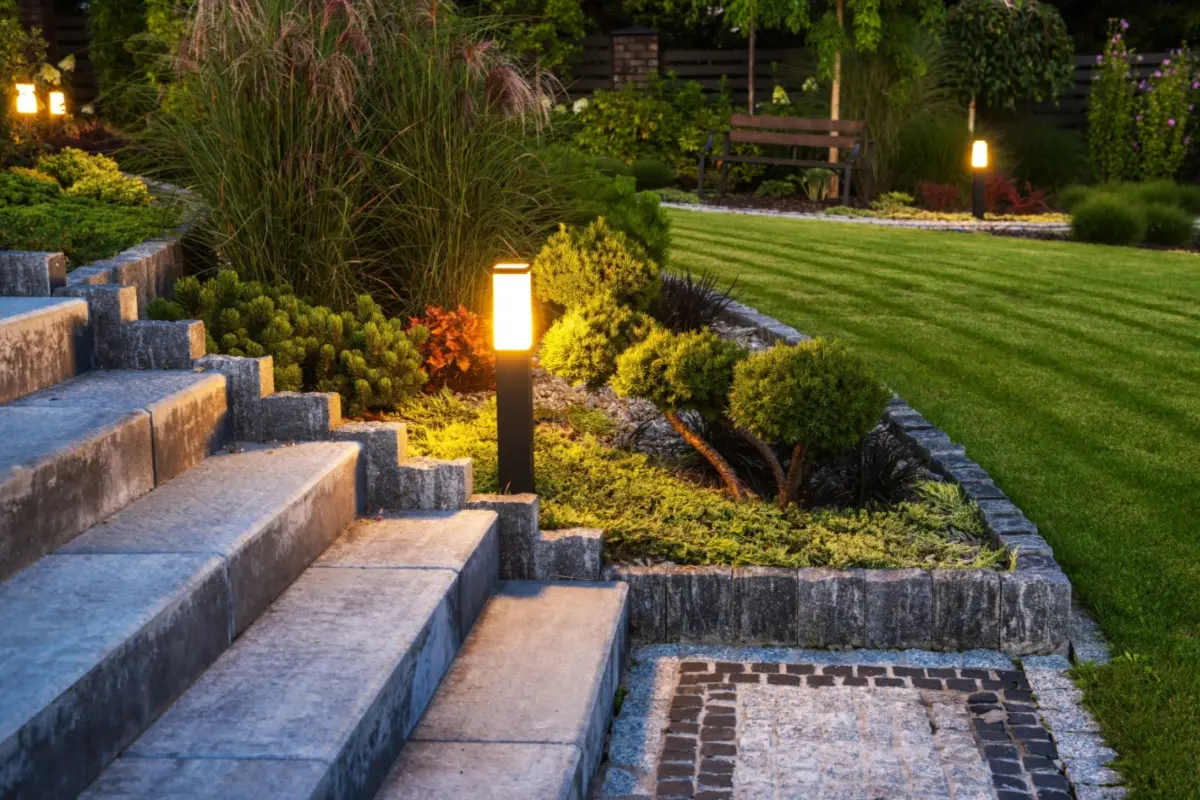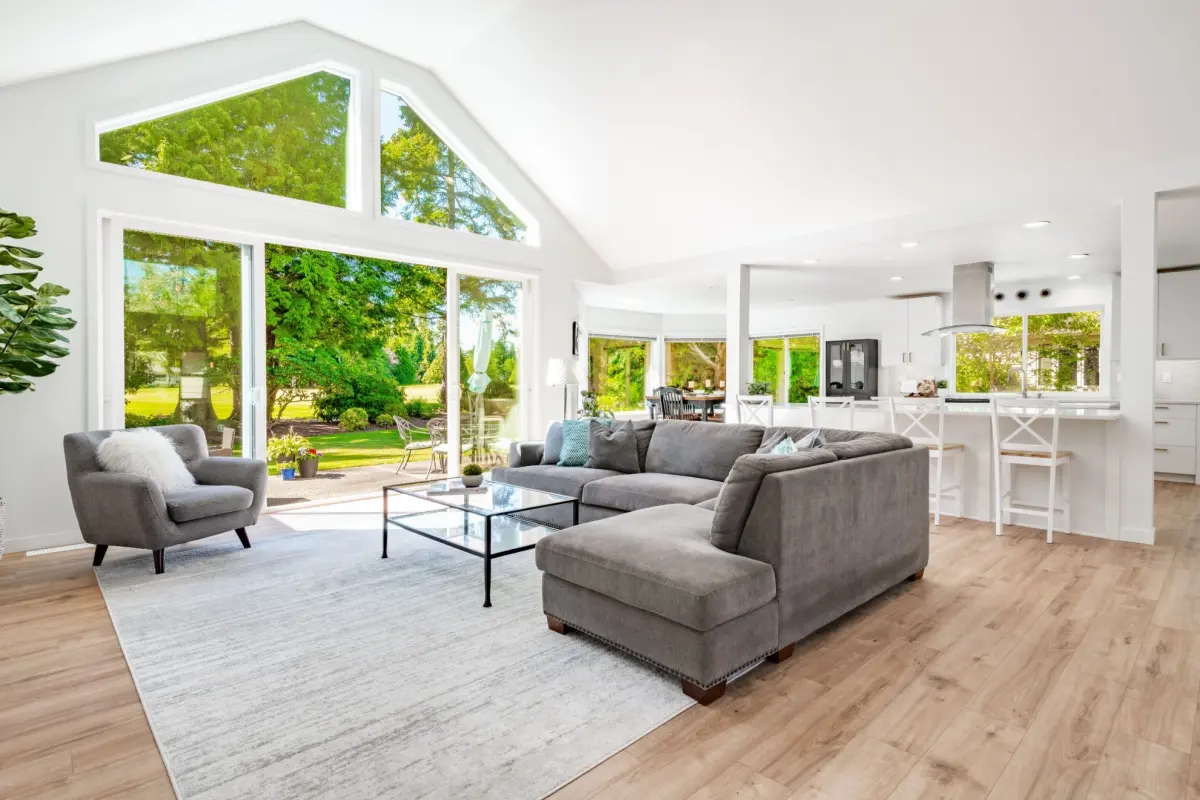Do you ever notice how a sunlit room can instantly lift your spirits? Studies show that natural light helps your brain function and is generally better for your health. Whether you want to illuminate rooms in your home or your office, we’ve listed seven tips for how to get more light in your room by harnessing the power of the sun.
A simple lighting hack is to paint your walls and ceilings a lighter color. Crisp whites and warm creams reflect more natural light than darker hues like reds, tans, or greens, making the room feel brighter even during twilight.

You might consider using a flat finish on the walls you want to paint to avoid creating a glare, but places like your kitchen or bathroom backsplash might benefit from a pearlescent tile that will reflect a bit of light in traditionally dark areas.
Mirrors have way more power than you think when maximizing natural light because they are natural reflectors. If you place a mirror on the opposite side of the window, you can generate new light in your room without adding lamps or bulbs.
Beyond standard mirrors, furniture made of glass and other reflective surfaces like metallic accessories can also help disperse natural light throughout the room.
Old or small windows can limit the amount of natural light entering your room. If your budget allows, upgrade your old and small windows to larger ones with bigger panes to let in more sunlight. Choose designs with slim profiles that maximize the glass area. Transom windows, which go above a door or another window, add light and character to a room by utilizing small spaces that don’t fit a standard-sized window. Skylights or solar tubes can open up heavy ceilings by opening them up to sunlight from above.
However, upgrading windows typically requires professional installation, which can be expensive. Installing windows ranges from $150 to $2,500 per window. Requesting window financing through a reputable contractor can help make minor and significant window renovation projects more affordable.
More oversized windows are already a step in the right direction, but the amount of sunlight entering the room depends on what type of covering you use. Thick drapes and dark curtains can keep out the cold and block sunlight. If you want to let more light in, opt for sheer curtains or sunshades, made of a reflective material that repels heat but lets in the light.
Bamboo and light-colored fabrics are also good for blinds because they diffuse light gently. Layering is another great strategy —use sheer panels for daytime light and heavier drapes for nighttime privacy.
Many exterior door designs are made of solid wood or fiberglass, which can prevent the flow of natural light between rooms. Choose a door design that includes glass panels, like French doors or sliding doors.
If privacy is a concern, doors with frosted or textured glass inserts can be a nice compromise (and better for your wallet). Door products that reflect light can exceed $2,000 or more, including installation, but door financing can reduce your upfront costs.
A simple, often overlooked strategy for getting more sunlight in a room is to cut back your landscaping. Overgrown trees, tall shrubs, and climbing plants outside your window can cast shadows over your room. Walk around your home’s exterior and prune anything encroaching on your windows.

Also, watch how your trees block the sun during different times of day to see where you can trim the leaves. Do this seasonally to ensure your windows aren’t obstructed and receive maximum light.
Finally, complement your natural light with strategically placed mood lighting to help illuminate your rooms at all times of the day. Choose light fixtures that mimic natural light, such as bulbs labeled “daylight” or those with a higher color temperature.
Sit floor lamps in dark corners, install wall sconces to accent walls, or add LED strip lighting under cabinets and shelves. These additions can blend with the natural light during the day and provide simple illumination when the sun sets.
You might be surprised to learn how natural light helps our bodies and brain function better. Here are some of the proven health benefits:

Bringing more natural light into your room doesn’t have to be a costly and complex mission. By implementing some of these tips, you can create a brighter environment that enhances your productivity and mood.